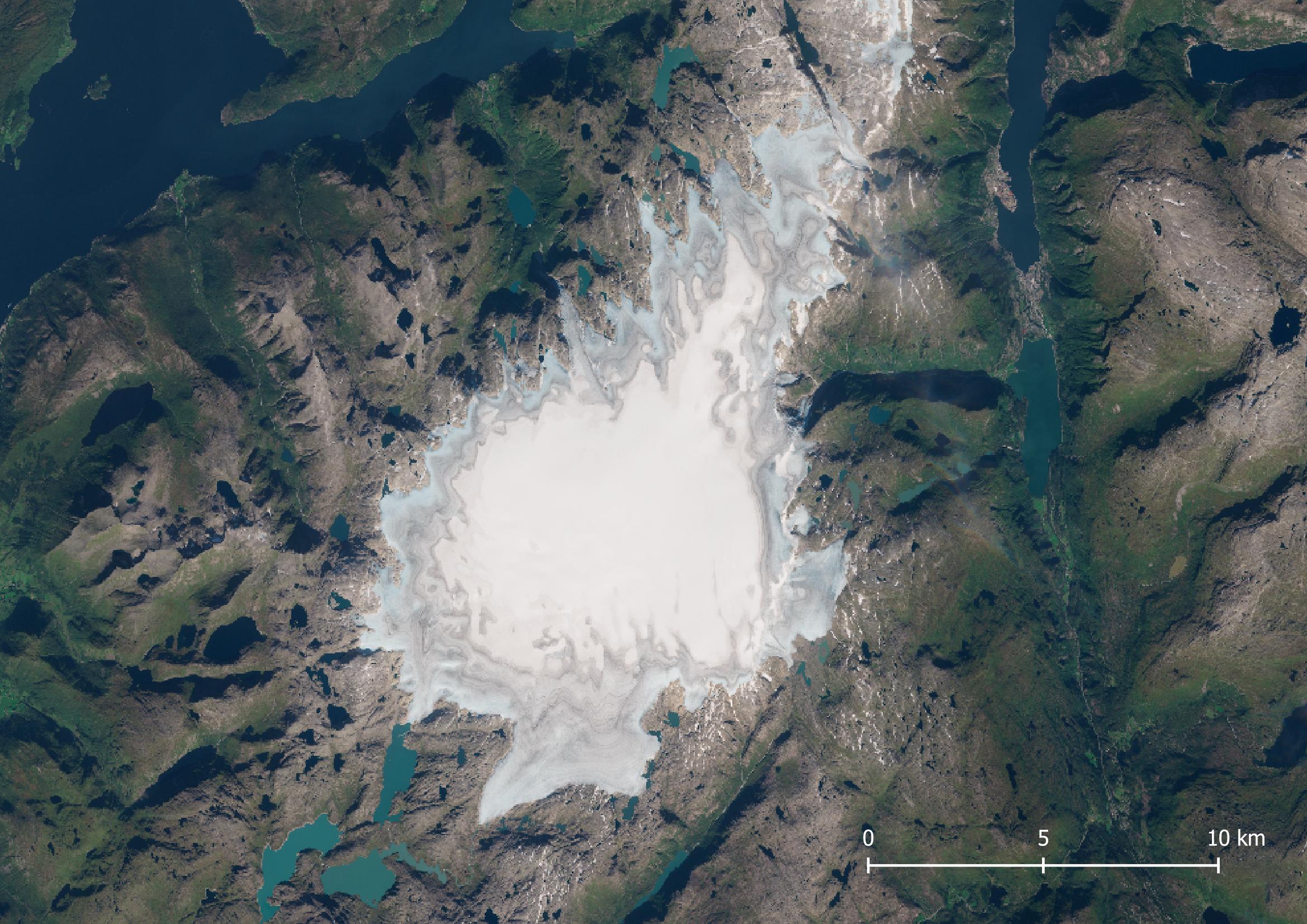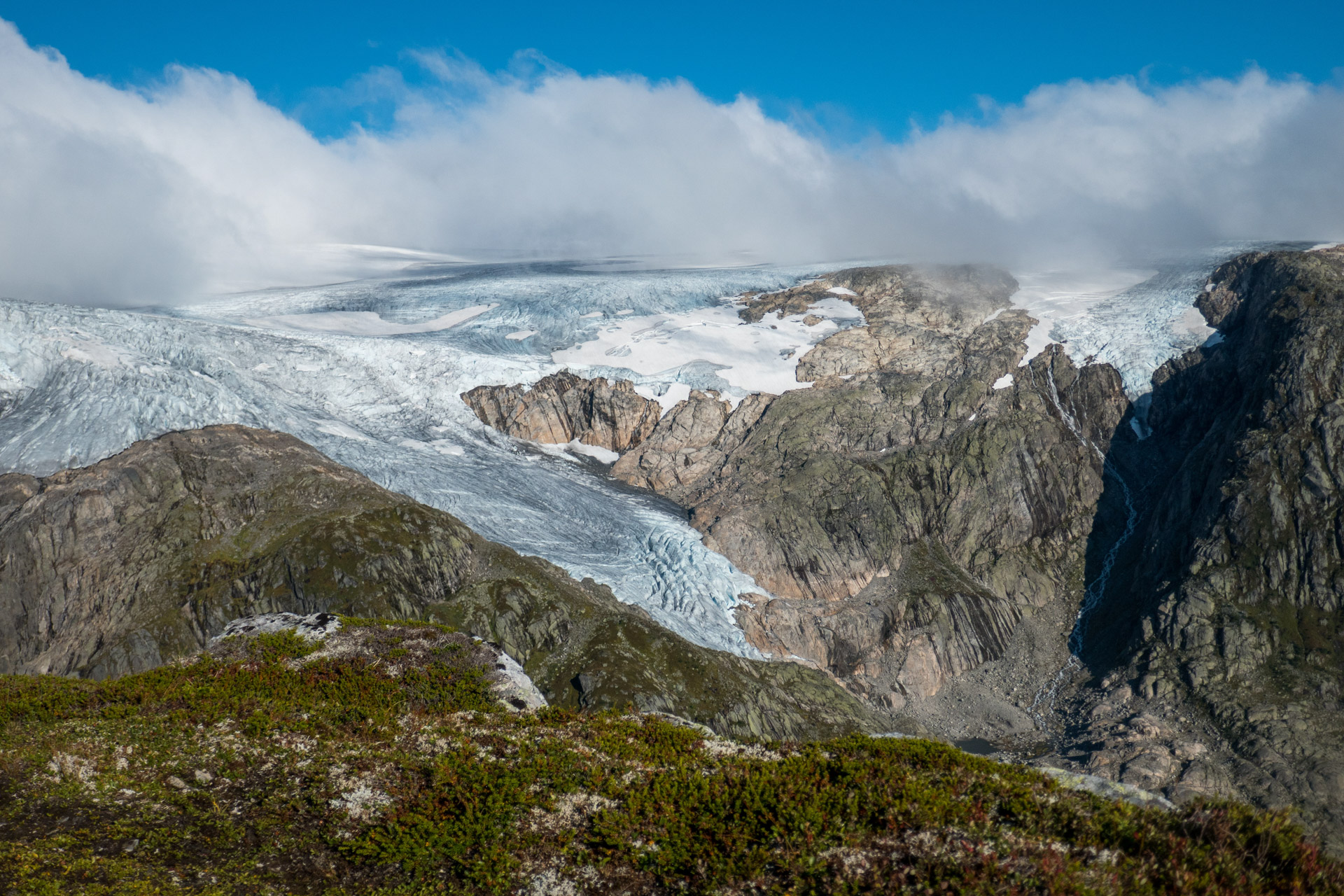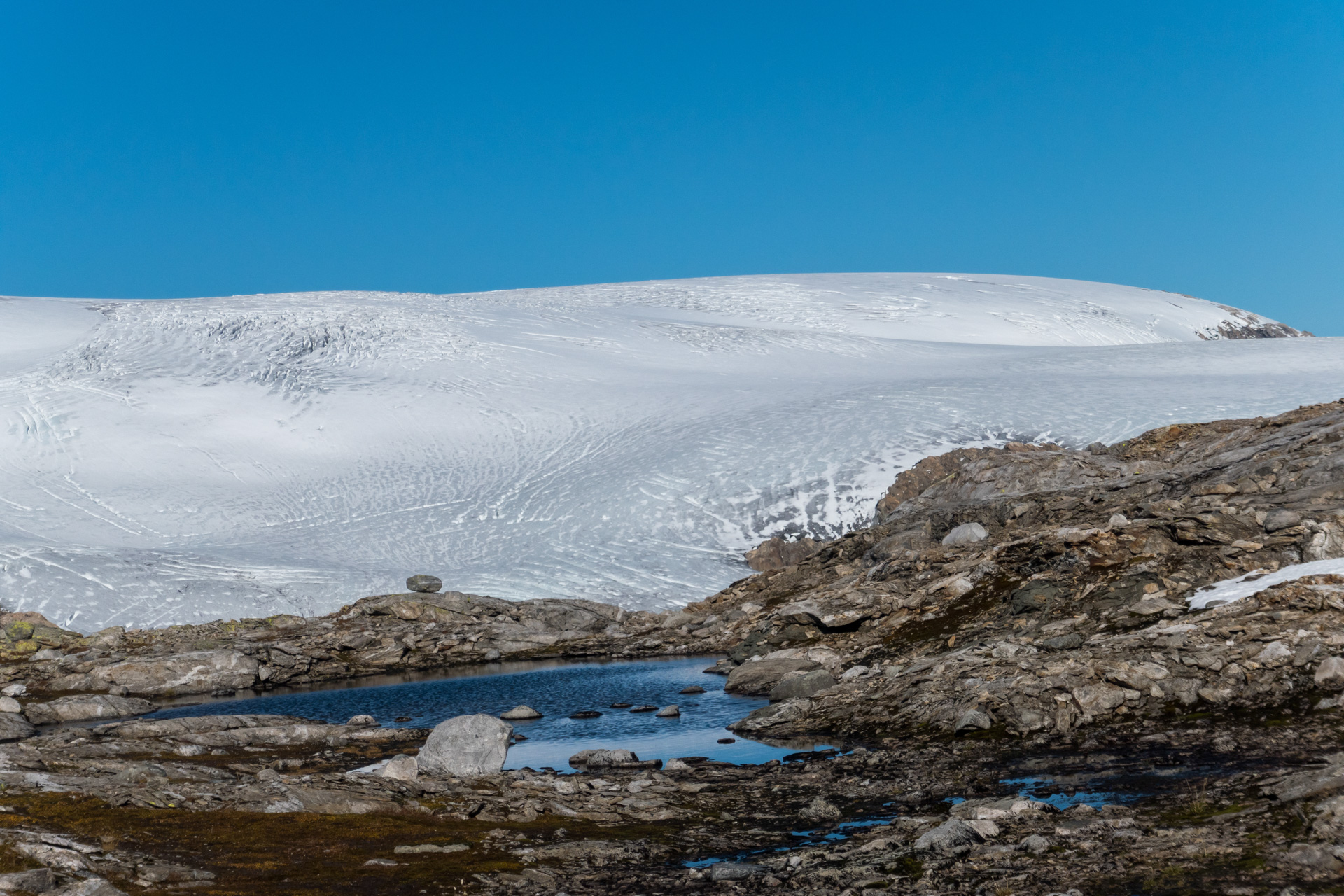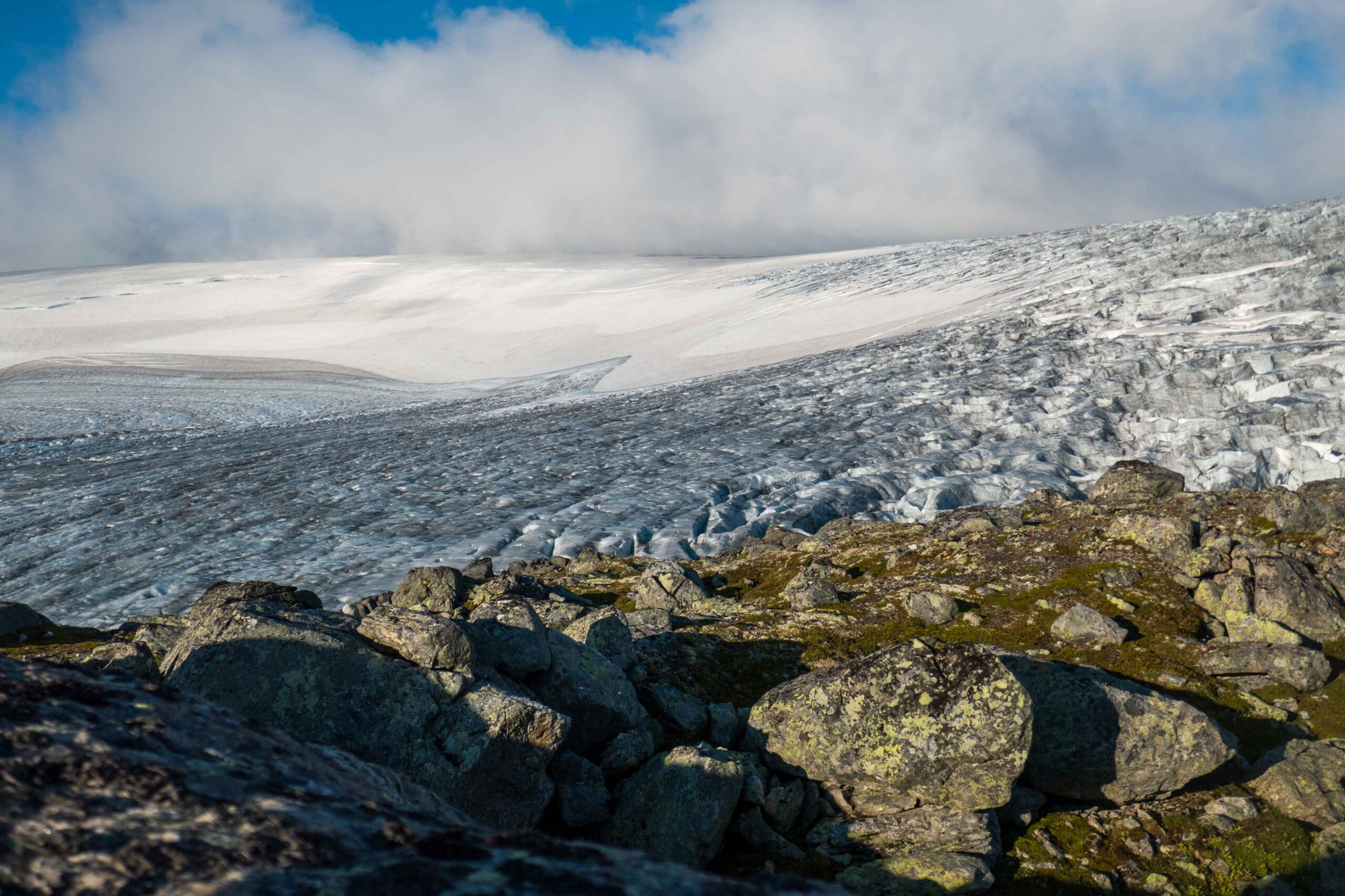Folgefonna is the southernmost ice cap of Norway. It actually is the collective name of three separate ice caps: Nordfonna, Midtfonna, and Sørfonna, of which the last one is by far the biggest at 164 square kilometers. The glaciers of Folgefonna are therefore of major importance for Norway.
The ice cap has a maximum elevation of 1600 m, a thickness of up to 570 m and is located close to the sea, so the area is very precipitous. From October to May as much as five thousand millimeters of precipitation comes falling down, which equals to fifty meters of dry snow. No wonder there is a summer ski center on northern Folgefonna. All other parts of Folgefonna lack lifts, so visiting its glaciers require long hikes. And because of climate change these hikes become a little bit longer every year.



The rate of glacier recession at Folgefonna differs for each part. While southern glaciers like Svelgjabreen and Blomstølskardsbreen are still quite close to their maximum extent, steeper outlet glaciers like Bondhusbrea (in the west) and Buerbreen (in the east) have receded much more. But climate change is affecting them all. Depending on the climate scenario, Folgefonna will disappear partly or completely. Northern glaciers of Folgefonna will already vanish this century due to thinner ice. The southern part has much thicker ice and could be preserved if the Paris Agreement is met (Johansson et al., 2022).
Together with the temperature, the ice thickness determines the speed at which glaciers of Folgefonna disappear. Folgefonna has an average ice thickness of 190 meter, with thin ice at its margins and thicker ice in the center. New research shows the ice cap is much thicker than previously thought. In fact, it was revealed that Folgefonna contains four times more ice (30 km3). Below the ice a landscape full of mountains and deep valley’s will appear. A number of valleys and overdeepenings will become lakes in the future, some of them several kilometers long. This landscape was covered by ice for thousands of years.



Search within glacierchange: